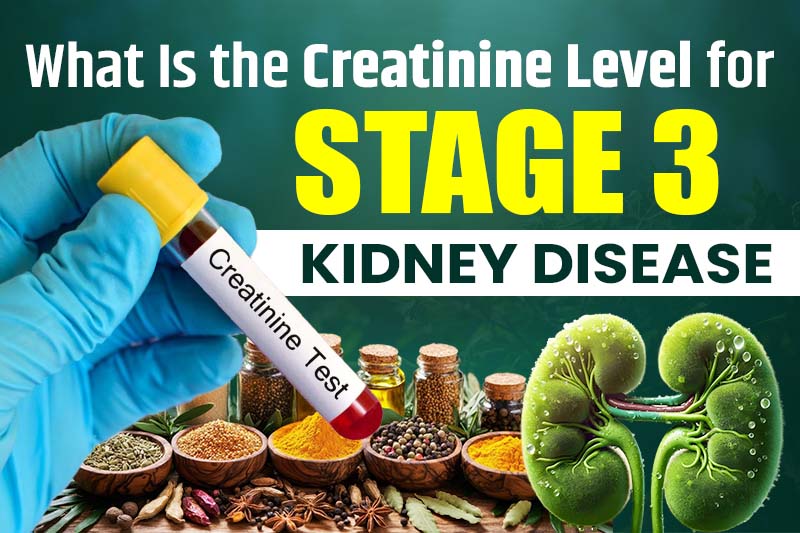
 September 23, 2025
September 23, 2025
Alright, let’s get real for a second. If you’re Googling what is the creatinine level for stage 3 kidney disease, chances are you, or someone you care about, has had a doctor casually drop some numbers on you that sounded more like a math quiz than a health update. Something like:
“Your creatinine is 2.1, your GFR is around 45… We’ll need to monitor this.”
And you’re sitting there thinking, Uh, doc… can you translate that into plain English? Maybe with pictures? Don’t worry; let’s break this down together, and yes, we’ll keep it friendly (and sprinkle in a little humor so it’s not all doom and gloom).
Think of creatinine as the “trash” your muscles naturally make every day. It’s not bad; it’s just a waste. Like taking out your garbage at home. The problem is, your kidneys are the garbage trucks. If they’re working fine, they roll up, pick up the creatinine, and dump it out of your body through urine.
But if your kidneys are struggling? Well, let’s just say the garbage piles up on the sidewalk. And nobody wants that smell.
So, doctors measure creatinine levels in your blood to see how well your kidneys are doing their clean-up job.
Before we jump into Stage 3 kidney disease, let’s quickly cover the normal creatinine level in kidney disease ranges:
(Yes, men usually have slightly higher creatinine, thanks to more muscle mass. Sorry guys, your biceps come with a price tag!)
So, if your number is hanging around these ranges, your kidneys are probably handling their waste management duties just fine.
Stage 3 kidney disease means your kidneys are working at about 30–59% of their full capacity. It’s like your office has 10 employees, but only 3–5 are actually showing up to work. Things still get done, but slower, sloppier, and with a lot more stress.
At this stage, people often ask again: What is the creatinine level for stage 3 kidney disease?
Creatinine levels are usually higher than normal because your kidneys just can’t clear it out fast enough.
But here’s the catch: doctors don’t just look at creatinine alone. They calculate something called the eGFR (estimated Glomerular Filtration Rate), which tells them how much blood your kidneys are actually filtering per minute.
So, if you’re wondering once more what is the creatinine level for stage 3 kidney disease, you’ll find it usually falls in this 1.6–2.5 mg/dL range, but always paired with an eGFR check.
Doctors even split Stage 3 into two sub-stages:
Creatinine levels usually creep higher in Stage 3b compared to 3a.
So, your creatinine level + your eGFR = the full picture of what’s happening inside your kidneys.
This is also why many patients like using a creatinine levels and eGFR chart explained guide to understand their lab results better.
Here’s the fun part (well, not so fun if you’re experiencing it): you can’t really feel high creatinine. It’s sneaky. That’s why blood tests are crucial. But as Stage 3 progresses, people may notice:
These symptoms are basically your body waving a flag saying, “Hey! Can we get some help down here?”
Okay, so your creatinine is higher than you’d like. Don’t panic! Stage 3 doesn’t mean dialysis tomorrow. Many people live for years, sometimes decades, at this stage with the right care.
Here are some friendly lifestyle tips:
And if you’re curious about how to reduce creatinine levels naturally, lifestyle changes like these, along with medical guidance, are often the first step. Ayurveda, yoga, and gentle herbal remedies may also support kidney health (always under supervision).
Think of your kidneys as two roommates sharing an apartment.
Stage 3 doesn’t mean eviction yet, but it does mean you should probably call in a life coach (aka your doctor) before things get too out of hand.
To recap:
So, if your doctor says your creatinine is “a little high,” don’t picture the end of the world. Picture it more like a warning light on your car dashboard. You don’t throw the whole car away; you check the engine, service it, and keep driving.
Your kidneys may not be at their A-game, but with some love, care, and maybe fewer late-night pizza binges, they can still carry you through life for many years to come.

